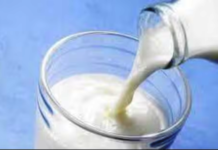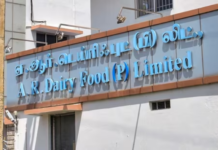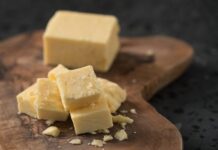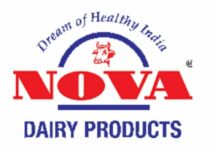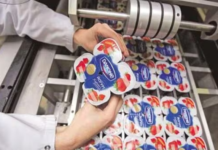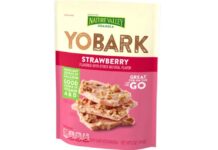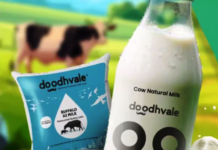Milk, cheese, yogurt and cottage cheese are healthy alternatives to fried or baked snacks and candies. So these dairy snacks need to be packaged in single-serve or snack-size formats.
Dairy foods and beverages are sold in smaller and more convenient snack-size packaging. You’ll find yogurt on a stick and cheese in single-serve packs. Dairy is even used to make packaging; The USDA has developed a film made from milk protein.
Snacking is an $87 billion business, and on the rise, with snacks accounting for 51% of all food sales. Therefore, many brands have realized they need to go small or go home. Packaging choices play a significant role in growing a brand’s market share. Packaging is a means to differentiate as well as to optimize the value chain. Put another way, packaging can increase sales while also reducing costs.
Smaller is better
One such snack is a cheese stick from Jarlsberg Cheese. Its Cheese Snacks are individually wrapped ¾-ounce pieces of cheese in stick format packaged eight to a bag. The cheese are said to appeal to consumers for picnics, back-to-school lunches and on-the-go snacking.
Cottage cheese brands have also taken notice of the snack trend.
“Cottage cheese has been around forever, and mainly thought of as a diet food,” said Gerard Meyer, CEO of Muuna. “The same was true for yogurt, but yogurt innovated while cottage cheese remained stuck in the past. At Muuna, we decided to reimagine cottage cheese, inside and out, down to our unique, beautiful cup.”
The company packages its new flavored cottage cheese in 5.3-ounce cups (in addition to a larger 16-ounce tub). The single-serve cup portion is in line with what yogurt brands are using. Muuna deposits pieces of real fruit on the bottom of its container and offers cottage cheese in five flavors: strawberry, blueberry, pineapple, peach and mango.
Hand-held yogurt
Yogurt in stick pouches is not new. But how about manufacturing yogurt as a hand-held treat? Yollies Yogurt Lolly lollypops (a lunchbox treat) are made with thickened yogurt and fruit puree. Ireland-based Kerry Foods developed the technology for the yogurt and chose equipment maker Unifill to help develop the shape and the filling solution. Amcor supplied the thermoforming packaging material.
The resulting stay-fresh pod shape is distinctive, helping to build a Yollies’ brand personality as the laminate is transformed to form the Yollies’ shape. Amcor’s peel-and-release film technology allows the product to come out of the pod easily. Yollies was a finalist for Best Dairy Packaging Design at the World Dairy Innovation Awards.
Packaging made from milk protein
It’s not always what’s in the package that’s remarkable. Sometimes it is the package itself. The American Chemical Society recently presented research on a packaging film made of milk proteins at its national meeting.
“The protein-based films are powerful oxygen blockers that help prevent food spoilage. When used in packaging, they could prevent food waste during distribution along the food chain,” said research leader Peggy Tomasula.
To create a better packaging solution, Tomasula and her colleagues at the U.S. Department of Agriculture are developing an environmentally friendly film made of the milk protein casein. The films are said to be up to 500 times better than plastics at protecting food against oxygen and they are biodegradable and more sustainable, breaking down easier than plastics. The milk-based packaging has smaller pores and can thus create a tighter network that keeps oxygen out, compared to the edible packaging made of starch currently on the market.
Milk protein films are edible and may have vitamins, probiotics and nutraceuticals added in the future. Flavors could also be added, researchers say. The films themselves have little flavor.
Four factors that are expected to drive dairy packaging:
- Single-serve packaging. It is preferred over other formats.
- Light weighting provides convenience to the consumers.
- Usage of effective packaging methods increases shelf life.
- Alternative shelf space at retail, like non-chilled inside aisles, where competitors are not focused.





